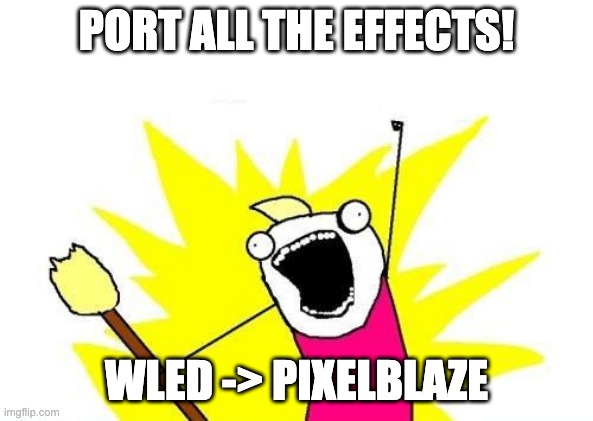So I hooked up a few of the new Hex panels I got to a new Atom lite (in the same shipment), and flashed it with the latest WLED. And I was reminded of a few things:
-
WLED has almost no matrix/2D support… there is some in the WLED reactive fork, but not yet in the main. PB blows it away if you have anything but a string of lights. Mapping in PB, especially as we make it easier to map for newbies, is far and away the killer feature nobody else is close to… if someone codes in FastLED, they can use a map generator but they still have to write the code by hand, and it’s not nearly as easy to do so as in PB.
-
WLED builds in dozens of ‘effects’, combined with dozens of ‘palettes’. Mixing and matching (most but not all effects use the palette selected) means it’s got a large number of built-ins, but really, many of the effects are variants, so it’s not as diverse as it seems. I suspect if you counted the number of patterns in the PB library, we probably have more actual different ‘effects’, by far.
That said, I’d like to propose a group effort, open to anyone who wants to help:

Port ALL the things!
The “re-org” of the pattern library into more of a github style is coming (soon?)
WLED bundles all of it’s built-in effects into just a file or two. Split that into concrete and fairly small tasks, we could build PB equivs (or better) for each one.
This could be a good way to folks learning to code in PB to feel really accomplished and contribute back. Some of those patterns are pretty easy to do in PB, perhaps easier than in WLED.
Who’s interested?
